Super Sirex
| Harry O. Ricci Super Sirex | |
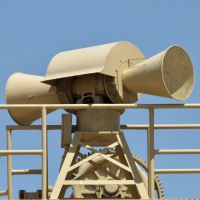
| |
| Company | Harry O. Ricci Siren & Signal, Inc. |
|---|---|
| Produced | 1951-1968? |
| Type | Rotational Electromechanical |
| Sound output | 131 dB @ 100 ft |
| Frequency | 60 Hz |
| Horsepower | 15-40 hp |
| Voltage | 208-240/480 V 3 ph |
The Super Sirex (Also sometimes referred to as the Super Si-Rex) is a line of large sized rotating sirens that was produced throughout the 1950s and 1960s by its founder and designer, Harry O. Ricci, and his company based out of Staten Island, NY. These sirens boasted incredible volume and range for the time, outperforming many of its contemporaries. Unfortunately few survive in service today due to its age, lack of replacement parts, and reliability issues with its rotators. These rotating behemoths were sometimes called "The Granddaddy Of All Sirens".
History and Design
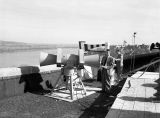
The Super Sirex was created roughly around 1951 as an attempt to create a high-powered rotating siren for civil defense purposes, as the newly christened Cold War introduced the threat of potential nuclear warfare. H.O.R.'s existing Siro-Drones were simply not powerful enough for this purpose, leading H.O.R. to create the Super Sirex and its omnidirectional vertical cousin the Sirex. The U.S. Government ran trials to look for effective civil defense sirens, with the Super Sirex being introduced alongside other rotational sirens such Federal's Thunderbolt prototypes and BNCO's Mobil Directo. Harry O. Ricci, the creator of the sirens, was an Italian immigrant, and the dual rotor sirens popular there at the time served as an inspiration for the Super Sirex's design. When it was released, it was advertised as "The Granddaddy of All Sirens" and was sold alongside H.O.R.'s smaller vertical Sirex and Siro-Drone omnidirectional sirens.
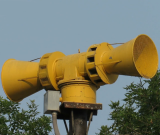
The Super Sirex came in many forms. Each one was hand-built by Ricci and his company, and was available in four different horsepower configurations: 15 hp, 20 hp, 40 hp, and 50hp. The Super Sirex series had model numbers, however unlike Federal Signal, the model numbers do not always match the horsepower rating. The Super Sirex was available in both single and dual headed models, with single headed models also being available in both single and dual rotor models. The Super Sirex came with a large gear-driven rotator underneath the siren that was driven by a separate external motor, which would then drive a few gears that would spin the entire siren unit on a turntable. It was also available with the rotator not included, which would allow the siren to function more as an omnidirectional siren. Unfortunately, the rotator design was not especially reliable, and was prone to failure to the point that most chose not to repair them when they stopped working. The rotator mechanism was housed inside of a cylindrical housing, with a small platform on the side for the rotator motor.
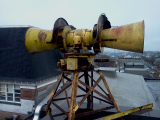
The Super Sirex was available in several different ports, such as 9 and 10-port single tone for the single head models, and 9/9 and 10/10-port single tone for the dual head models. Both the single and dual headed models were also available in 7/10-port dual tone, creating a distinctive tritone unique to the Super Sirex. The rotors and stators on the Super Sirex were also used on the vertical Sirex.
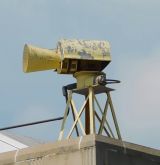
The Super Sirex resembles a British siren in design, with two large rotors on either side of a powerful dual sided motor. On single headed models, only one chopper would be used, with the 7/10-port single headed unit being the lone exception with two separate choppers on a common shaft. This unfortunately leads to the airflow to the rear rotor's intake being stifled, harming that rotor's output. Two large conical projectors (or one for single headed models) were attached to the intakes, as an equal amount of sound comes from both the rotors themselves, and out of the intake. Early Super Sirex sirens came with two shroud covers (sometimes known as "sounders") for the stators, similar to that of a Sterling Model M or Federal Electric Type Mach. B. This would then be later changed to a shroud that covers both the rotors and the motor itself, improving the longevity of the siren.
The Super Sirex would eventually end production somewhere in the late 1960s, possibly 1968, with several units being sold in 1964 and little information about them existing afterwards. This is likely due to being unable to compete with Federal Signal, who was completely dominant in the siren market by that time. Due to their age, and the scarcity of replacement parts, the number of active Super Sirex units have dwindled significantly. As of 2025, only a handful still remain in operation, and only one of them still has a functioning rotator. However, the sirens that do still operate continue to prove just how powerful and effective Ricci's sirens were, and will likely continue to warn the public of danger for years to come.